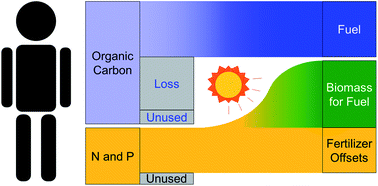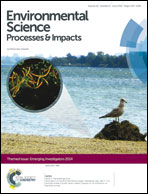Energy positive domestic wastewater treatment: the roles of anaerobic and phototrophic technologies†
Abstract
The negative energy balance of wastewater treatment could be reversed if anaerobic technologies were implemented for organic carbon oxidation and phototrophic technologies were utilized for nutrient recovery. To characterize the potential for energy positive wastewater treatment by anaerobic and phototrophic biotechnologies we performed a comprehensive literature review and analysis, focusing on energy production (as kJ per capita per day and as kJ m−3 of wastewater treated), energy consumption, and treatment efficacy. Anaerobic technologies included in this review were the anaerobic baffled reactor (ABR), anaerobic membrane bioreactor (AnMBR), anaerobic fluidized bed reactor (AFB), upflow anaerobic sludge blanket (UASB), anaerobic sequencing batch reactor (ASBR), microbial electrolysis cell (MEC), and microbial fuel cell (MFC). Phototrophic technologies included were the high rate algal pond (HRAP), photobioreactor (PBR), stirred tank reactor, waste stabilization pond (WSP), and algal turf scrubber (ATS). Average energy recovery efficiencies for anaerobic technologies ranged from 1.6% (MFC) to 47.5% (ABR). When including typical percent chemical oxygen demand (COD) removals by each technology, this range would equate to roughly 40–1200 kJ per capita per day or 110–3300 kJ m−3 of treated wastewater. The average bioenergy feedstock production by phototrophic technologies ranged from 1200–4700 kJ per capita per day or 3400–13 000 kJ m−3 (exceeding anaerobic technologies and, at times, the energetic content of the influent organic carbon), with usable energy production dependent upon downstream conversion to fuels. Energy consumption analysis showed that energy positive anaerobic wastewater treatment by emerging technologies would require significant reductions of parasitic losses from mechanical mixing and gas sparging. Technology targets and critical barriers for energy-producing technologies are identified, and the role of integrated anaerobic and phototrophic bioprocesses in energy positive wastewater management is discussed.


 Please wait while we load your content...
Please wait while we load your content...